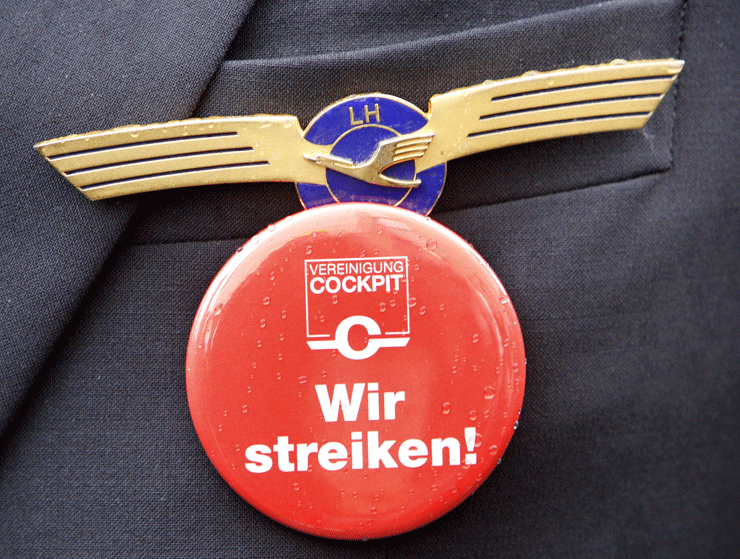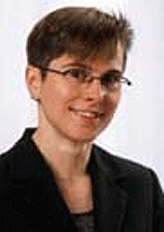Here Comes DE Judge
How Lufthansa Got Back
In The Air

 As
big things happen in the world, so do they happen in the airline business
– like last week’s strike at Lufthansa. As
big things happen in the world, so do they happen in the airline business
– like last week’s strike at Lufthansa.
When somebody has the ability to look
into the face of an impossible event and reap a decent result, it is
proof positive that it isn’t just a matter of being in the right
place at the right time. You also have to be the right person.
At 44 years young, with a PhD in Philology
and membership in the German Social Democratic Party (SDP), Silke Kohlschitter
has quickly become a household name for Germans in air cargo.
‘Quickly’, referring to just
this past Monday, when she found herself on the world stage, with millions
of Germans and people around the world suddenly aware of her presence.
As judge at Frankfurt’s labor court,
this humorous and energetic lady brought the scrabbling pilots union,
Vereinigung Cockpit (VC), and Lufthansa back to the table.
“I am only a kind of nurse offering
my help, but it’s your job to give birth to a new tariff agreement,”
she address the brooding VC and Lufthansa people, along with their various
mouthpieces, in her court room.
“And hurry up with your decision-making
process since at 8pm begins the Tagesschau,” she admonished, referring
to Germany’s best-viewed TV news program.
The impact of those words snapped the
lawyers and emissaries out of the quarreling and into the field of compromise,
eventually settling onto an important agreement for a new round of negotiations
to settle their tariff dispute and end the strike actions.
This, only minutes after Judge Kohlschitter
astounded everybody in the packed court room by asking the pilots if
their main demand was to receive better pay.
This simple but basic question obviously
surprised the VC representatives, who finally nodded after taking long
and notable breaths.
“Okay,” she said, “since
the main topic is a new settlement on salaries, you both better get
back to the table straight away and negotiate a new deal, since there
is no real alternative to talks.”
Her recommendation was the right thing
at the right time, resulting in a welcome respite in an otherwise grim
fight that has to do with more influence on management decisions and
long term job security, which the VC unionists ranked top on their agenda.
It provided a chance for some perspective on both sides. Consequently,
by admitting that their main cause was money, the VC side had to drop
all claims that German pilot tariffs should also be applied to cockpit
crews of foreign Lufthansa subsidiaries, like LH Italia.
This was especially important, as this
demand has been a sort of casus belli for Lufthansa’s executive
board members. Hence, they had fiercely rejected all attempts to interfere
in management decisions by the unionists prior to the court hearing.
When the VC entourage and Lufthansa managers
entered the courtroom again after a round of separate consultations,
both sides accepted Frau Kohlschitter’s proposals unanimously
and without any conditions.
The court’s hearing was over.
The pilot’s strike, too.
It was 7:54 pm, exactly six minutes before
Tagesschau went on air.
Talk about on-time delivery!
Heiner Siegmund |




